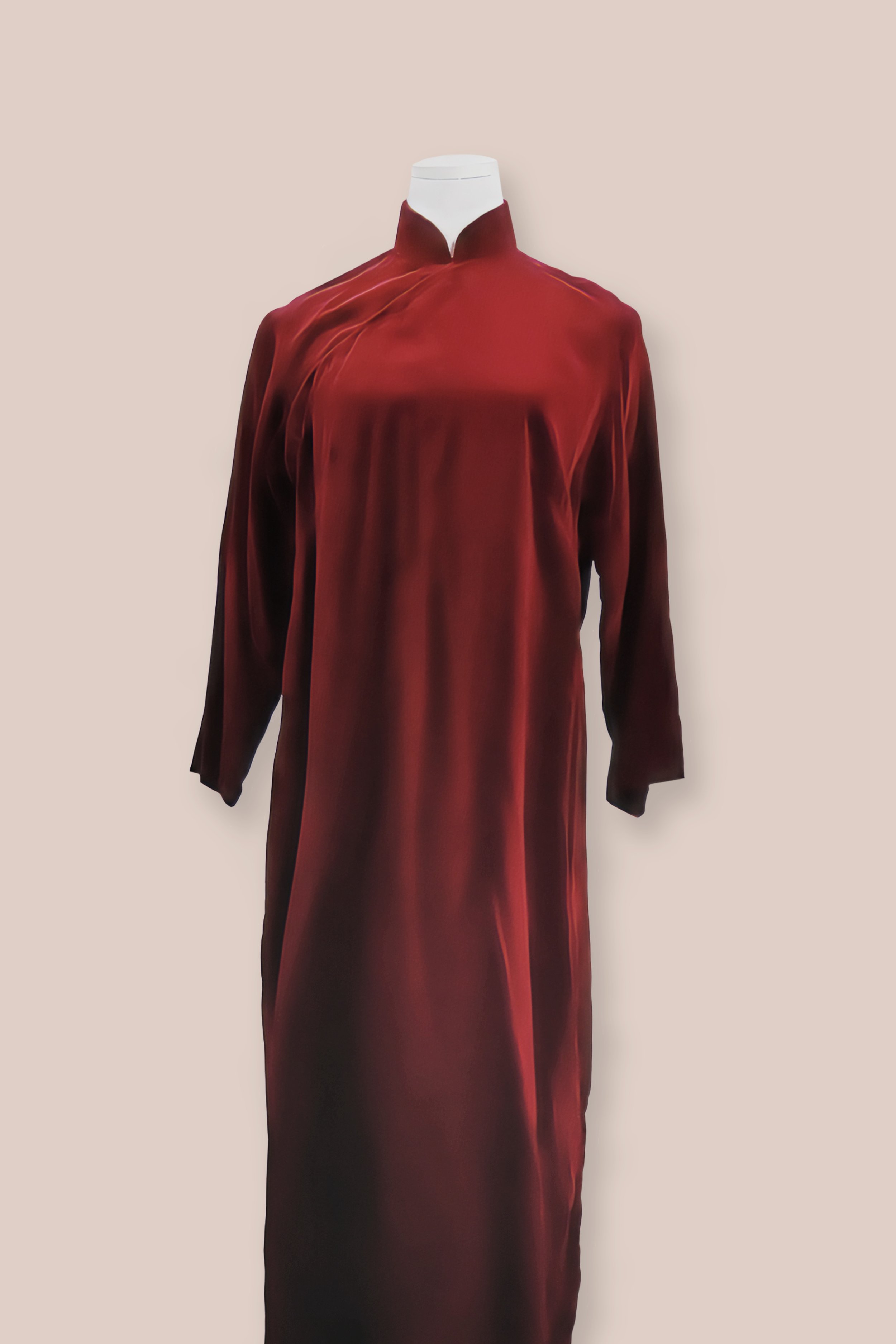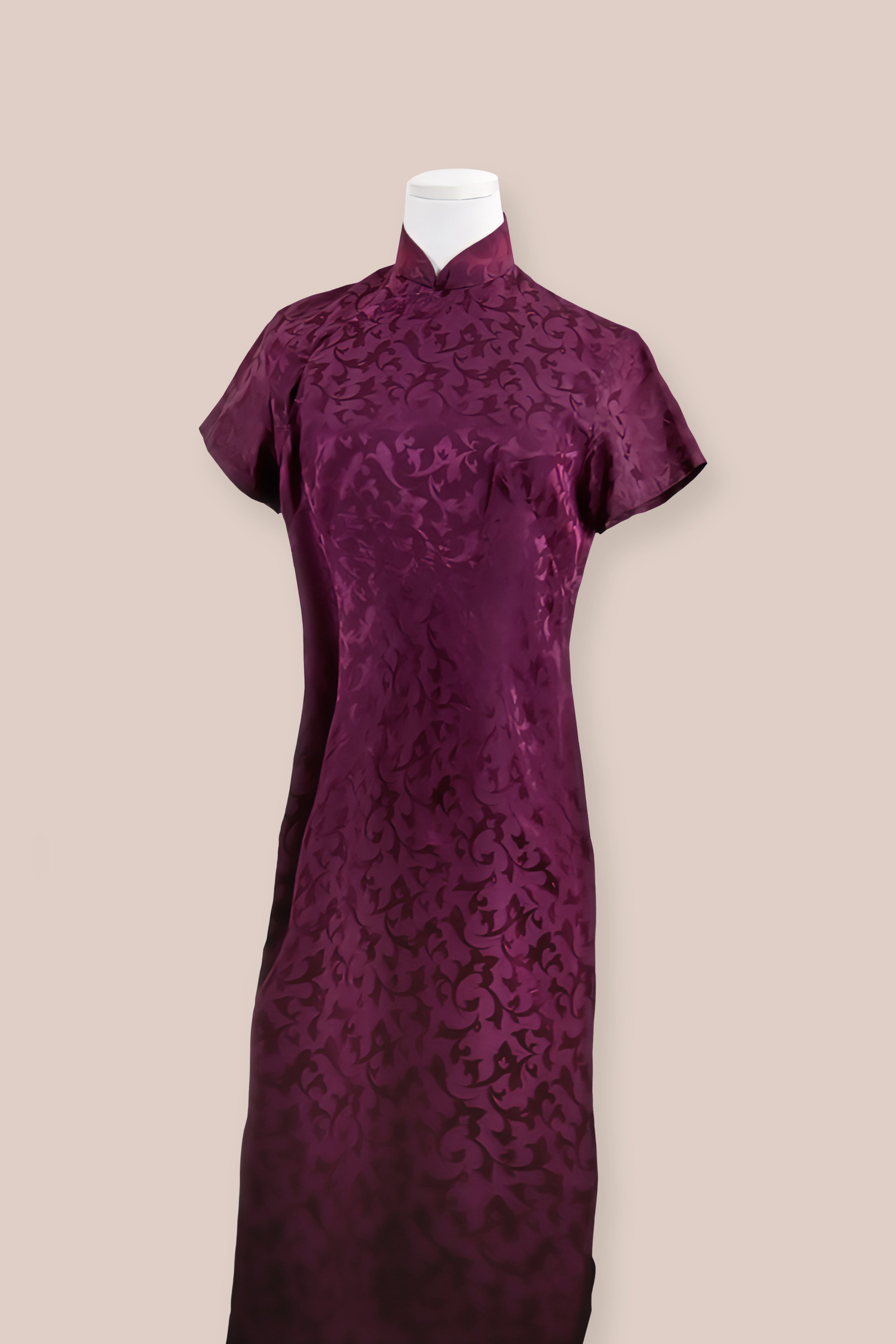Ms. Frances Feng's Qipao Story: An Embodiment of Chinese American Identity and its Integration with Modern American Culture
This exhibit was made possible in large part through the generosity of Ms. Frances W. Feng, the primary donor of the Qipao exhibit. Her story and qipao collection illuminate an important historical moment in the experience of the Chinese diaspora.
The qipao, a type of traditional Chinese dress, played an important role in the lives of Ms. Feng and other Chinese-American women. Worn during ceremonial as well as everyday occasions, the qipao brought Chinese fashion to a new country. Continuing this tradition allowed Ms. Feng to maintain a cultural connection with her homeland while enriching her adopted country with new aesthetic sensibilities. Through Ms. Feng’s qipao collection, we can better understand the significance of this unique dress in the history of Chinese Americans and the lives of the individual women who wore them.
Ms. Feng’s Life Story
Ms. Frances W. Feng came to the United States from Hong Kong in 1959 to pursue an undergraduate degree. This overseas journey involved a 19-day voyage on a ship owned by American President Lines that made regular trips between Hong Kong and San Francisco. Ms. Feng brought 300 lbs of luggage with her as she prepared to begin her new life in a faraway country. Every one of her suitcases was filled with qipaos.
Despite the 3,000-mile journey and the enormity of the task before her, Ms. Feng felt little fear. She had done her research and studied American culture by carefully reading every copy of Life Magazine that she could obtain. She, therefore, found that adjusting to the new culture was relatively easy. Ms. Feng thrived at university, and with her fluency in Mandarin, Cantonese, and English as well as her excellent communication skills, she even rose to become President of the Chinese International Students Association. Over the years, she has further adapted to the American lifestyle and discovered new hobbies such as biking, skiing, and traveling. At the same time, she keeps her cultural roots by cooking Chinese food.
Ms. Feng's Qipao Collection
Ms. Feng brought many qipaos to this country and wore them on different occasions, including everyday activities, parties, and ceremonial events, among others. All of the qipaos were tailor-made in Hong Kong, as there were no ready-made clothes stores on the island in the 1950s. She donated much of her qipao to the Chinese American Museum in Washington, D.C.; the photographs below are all items from her collection.
Blue Hollow Floral Dress with Coat
Lacey over the Dress, Lining
Lavender-colored Everyday Dress
Red Long-Sleeve Dress
Black Dress
Yellow Casual Dress
Brown Qipao with Gold Floral Pattern
Casual Dress
Red Dress
Blue and purple checkered Dress
Silk Satin Party Dress
Utilizes the shimmering nature of the fabric to add glammor to her outfit. Ms. Feng wore it to parties.
Purple Floral Pattern Dress
Floral Pattern Dress
Black Party Dress with Raised Pattern
Pink Plain Designed Dress
Orange Floral Patterned Summer Picnic Dress
Carrying Ms Feng’s memory of having a picnic with her husband.
Light Pink Everyday Dress
Floral Patterned Casual Dress
Brown Casual Dress
Yellow Flower Pattern Dress
Floral Pattern Dress
Red Dress
Blue floral print dress
Sky blue dress
Embroidery on fabric, cut into strips and pieced together
Geometric Patterned Dress
These clothing collections show the various styles and trends in Chinese American fashion at the time. Wearing the qipao on all sorts of occasions, from mundane everyday tasks to important life events, helped her adapt to new environments while preserving her Chinese heritage and allowing two cultures to coexist harmoniously with her.
The Qipao: Bridging Cultures and Preserving Roots
Like Ms. Feng, many upper-class Chinese-American women regularly wore qipao throughout the 1950s and 1960s. The qipao has always been essential to Chinese culture and has influenced many people worldwide.
The qipao was originally based on the male’s long robe(长衫) and also derived from the characteristics of the Manchu women's robe Qizhuang (旗装), which later became popular among female consumers. Beginning in the early 1920s, many women began to wear the qipao as a means of rebelling against their gender-stereotyped identities and as a demonstration of the liberation of their bodies. This form-fitting fashion was considered a very daring and even provocative style at the time. Similar to how the flappers challenged Western gender norms during the same era. The qipao was also closely associated with women's liberation movements by displaying the female body, a subversive act in China’s patriarchal society.
The qipao was first popularized in Shanghai around the 1920s. After the founding of the People’s Republic of China in the late 1940s, many Shanghai tailors moved to Guangdong or Hong Kong. Hence, tailors in the Guangdong and Hong Kong regions created most of the trendy qipao styles of the time, with the Hong Kong qipao becoming the most popular. As Chinese immigrants brought the qipao with them around the world, they also adapted the dress to match the styles and aesthetics of other cultures. In the wave of immigrants to the United States from mainland China or Hong Kong, the qipao grew to become an integral part of the lives of Chinese-American women. (Lee, 252)
In the 1960s, Chinese Americans increasingly assimilated into mainstream American life as a result of social pressures and individual choices and tendencies. Children of immigrants tended to more fully assimilate than their parents, as American cultural influences permeated their education and every other aspect of their lives. (Chinese American Voices, 133-134)
For those who emigrated from China to the United States, the culture shock made their use of the qipao all the more necessary and essential because it linked them to and reminded them of their familiar ancestral culture. After the 1950s, the qipao underwent significant innovations in style, and Chinese-American women modified and redesigned them to fit the fashion of the time period. For example, qipao made between 1950 and 1969 were longer in length and featured different styles of decoration and patterning, elements that can be seen in Ms. Feng's collection of qipao. Wearing qipao also allowed women to preserve their identity and pay homage to their heritage. By wearing the qipao, many Chinese-American women, especially first-generation immigrants, retained their identities while also integrating into the local culture at formal occasions such as parties and gatherings. The qipao is a way for Chinese-American women to identify themselves, a way for them to stay rooted in Chinese culture, and a way for them to seek a connection to the culture of their ancestors. Cultural roots are an essential foundation of the Chinese-American community, and they provide a sense of belonging and cultural confidence.
At the same time, the popularity of the qipao reflected the spread of Chinese culture and aesthetics in all aspects of modern American society and wherever Chinese immigrants established new lives. Through the wearing of qipao, the beauty and style of the dress became a medium for spreading traditional Chinese aesthetics to the adopted nations of Chinese immigrants. Through fashion, Chinese immigrants, and Chinese women in particular, increased their cultural presence and voice in American society. As a cultural symbol, the qipao plays a crucial role in cultural exchange.
In the last part of the conversation, I asked Ms. Feng why she was willing to donate so many beautiful qipao to the Chinese American Museum. She said that since she no longer wore them, she wanted to donate the qipao to the museum as a means of preserving her memories and also the memories of several generations of Chinese Americans. All of their qipao represent their sense of identity with the culture of their ancestors, and it is also a way for them to preserve their cultural roots and integrate into the new culture and society.
Works Cited:
Chinese American Voices: From the Gold Rush to the Present. United Kingdom: University of California Press, 2006.
Garrett, Valery. Chinese Dress: From the Qing Dynasty to the Present Day. Japan: Tuttle Publishing, 2020. 147
Lee, Jonathan H. X.. Encyclopedia of Asian American Folklore and Folklife: [3 Volumes]. Ukraine: ABC-CLIO, 2010.
























